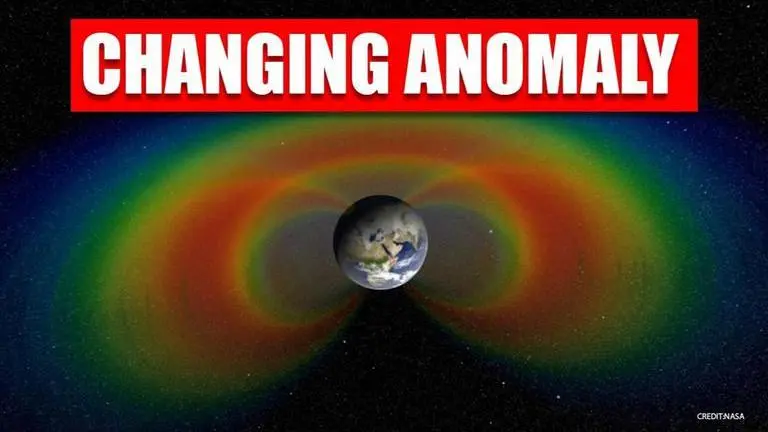Updated 19 August 2020 at 07:07 IST
NASA spots strange 'dent' in Earth's magnetic field that could damage low orbit satellites
While the weak spot in the magnetic field over South America and southern Atlantic Ocean has been there for decades, the anomaly has gradually changed over time
- Science News
- 3 min read

NASA scientists have found a small but growing dent in Earth’s magnetic field that could prove hazardous for low-orbit satellites. While the weak spot in the magnetic field over South America and the southern Atlantic Ocean has been there for decades, the anomaly has gradually changed over time.
The magnetic field acts like a protective shield around the Earth, repelling and trapping charged particles from the Sun. However, the South Atlantic Anomaly (SAA) allows these particles to dip closer to the surface of the planet than normal and the radiation in this region can disrupt computers onboard satellites passing overhead.
Earth’s magnetic field acts like a protective shield around the planet — but it has an unusually weak spot, where particle radiation can interfere with onboard computers and satellites. How @NASAEarth researchers monitor its changes: https://t.co/kxau4LOaV7 pic.twitter.com/0il8BHz18S
— NASA (@NASA) August 17, 2020
NASA scientists monitor the region to observe variations in the magnetic field strength which can indicate changes happening at the core of the planet as well as those in the atmosphere. Nasa's geomagnetic, geophysics, and heliophysics research groups observe and model the week spot, to monitor and predict future changes that can help prepare for possible challenges to satellites and humans in space.
So far, the South Atlantic Anomaly has no visible impacts on the surface. However, latest observations denote that the region is expanding westward while weakening in intensity. Moreover, it has split into two lobes, creating additional challenges for satellite missions.
Advertisement
South Atlantic Anomaly
The anomaly arises because of the tilt in Earth's magnetic axis and the flow of molten metals within its core. Invisible magnetic field lines encircle the planet but the core magnetic field is neither aligned through the globe nor perfectly stable. The hot molten metal churning in the Earth’s outer core acts as a massive generator, creating electric currents that produce the magnetic field. As the core motion changes over time, the magnetic field fluctuates in space and time too.
"Even though the SAA (South Atlantic Anomaly) is slow-moving, it is going through some change in morphology, so it's also important that we keep observing it by having continued missions," said Terry Sabaka, a geophysicist at NASA's Goddard Space Flight Center in Maryland.
Advertisement
A pothole in space
Although the weak sport in the magnetic field arises from processes at Earth's core, its effects reach far beyond the planet's surface. If a satellite is hit by a high-energy particle over the region, it can short-circuit and suffer permanent damages as well. To avoid losing vital satellite instruments, scientists usually shut down non-essential components onboard as they pass through the South Atlantic Anomaly.
The changing anomaly in Earth's magnetic field provides scientists fresh opportunities to understand Earth's insides and how its dynamics influence other aspects of the plant's system, said Weijia Kuang, a geophysicist with Goddard’s Geodesy and Geophysics Laboratory. With a vigilant eye on the slowly evolving 'dent' in the magnetic field, researchers can better understand how the planet is changing and help prepare satellites for future challenges.
Published By : Prerna Vijayeni Panda
Published On: 19 August 2020 at 07:07 IST
